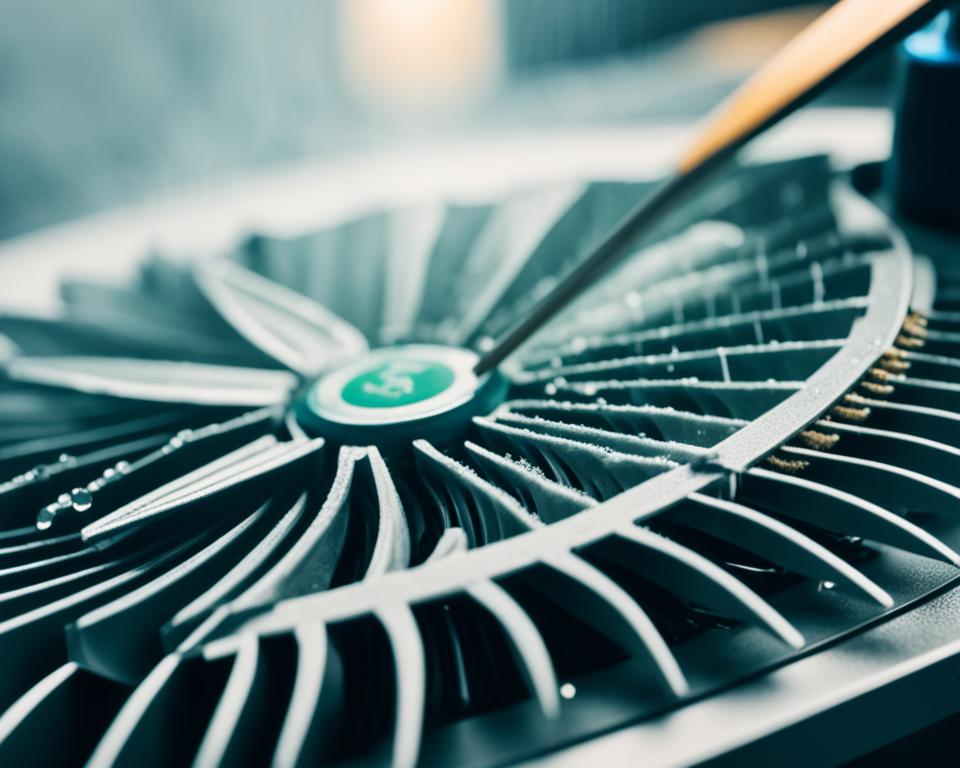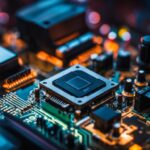Imagine sitting at your desk, engrossed in an important project, when suddenly, your computer starts making a loud whirring noise. You try to ignore it, but the noise only gets louder, and the heat coming from your computer is becoming unbearable. Frustrated, you realize that it’s time to clean your PC fans.
Cleaning and maintaining your PC fans is essential for optimal performance and longevity. Over time, dust and debris accumulate on the fan blades and hinder airflow, causing your computer to overheat. By regularly cleaning your PC fans, you can improve cooling efficiency, reduce noise, and prevent potential damage to your hardware.
In this article, we will provide you with expert tips and step-by-step instructions on how to clean and maintain your PC fans, so you can keep your computer running smoothly and efficiently.
Key Takeaways:
- Regularly cleaning and maintaining PC fans is crucial for optimal performance and preventing dust buildup.
- Over time, dust accumulation on PC fans can reduce their efficiency, increase noise and heat, and impact overall computer performance.
- Monitoring tools like HWMonitor or SpeedFan can help you assess the need for cleaning based on fan speed and temperature.
- When cleaning your PC fans, make sure to turn off your computer, unplug it from the power source, and let it cool down completely.
- You will need basic tools such as a screwdriver, compressed air can, soft brush, microfiber cloth, and isopropyl alcohol to clean your PC fans effectively.
The Importance of Cleaning Your PC Fans
PC fans and filters play a crucial role in regulating airflow and preventing dust buildup in your system. Over time, dust can accumulate on your fans, reducing their efficiency, increasing noise and heat, and impacting overall performance. Regular cleaning and maintenance of PC fans are essential for a properly functioning and optimized computer.
Benefits of Cleaning PC Fans
- Improved Performance: Clean fans ensure proper airflow, allowing your computer components to stay cool and operate at optimal levels.
- Reduced Noise: Dust accumulation can cause fans to become noisy. Cleaning them regularly helps maintain a quieter environment.
- Extended Lifespan: By preventing dust buildup, cleaning PC fans can extend the lifespan of your components.
- Increased Reliability: Keeping your PC fans clean reduces the risk of overheating, system crashes, and potential damage to your hardware.
- Better Energy Efficiency: Cleaner fans require less power to spin, leading to improved energy efficiency and potential cost savings over time.
Dust particles can have significant effects on PC fans, hindering their performance and impacting the overall system. The accumulation of dust can restrict airflow, causing the fans to work harder and generate more heat. This not only increases the risk of overheating but also puts additional strain on other system components. Regularly cleaning your PC fans is vital for maintaining a cool, reliable, and efficient computer.
When to Clean Your PC Fans
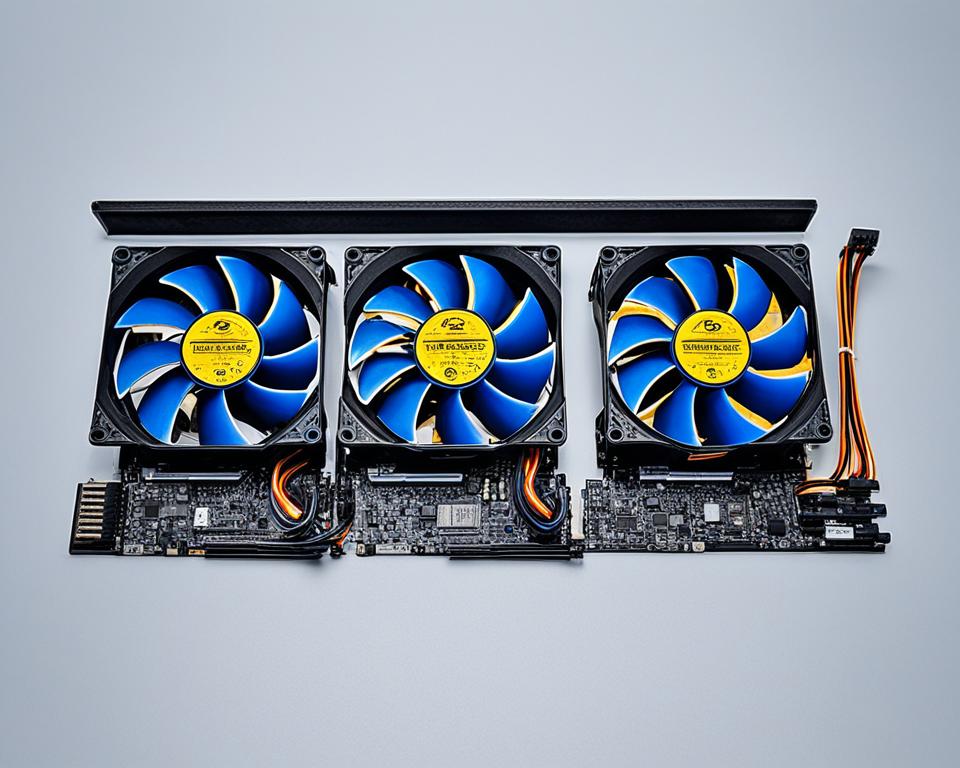
The frequency of cleaning your PC fans depends on various factors such as PC usage, environment, and fan configuration. Keeping your PC fans clean is essential for maintaining optimal performance and preventing dust buildup, which can lead to overheating and reduced airflow. To ensure that your PC fans are functioning at their best, it is recommended to check and clean them every 3 to 6 months. However, certain signs can indicate the need for more frequent cleaning:
- Reduced Airflow: If you notice that your computer is running hotter than usual or experiencing frequent throttling, it may be due to restricted airflow caused by dust accumulation on the fans.
- Higher Temperatures: Over time, dust buildup on PC fans can cause temperatures to rise, leading to increased heat inside your computer. Monitoring software can help you keep track of temperature changes and identify potential fan issues.
- Louder Noise: As dust accumulates on the fan blades, it can create unbalanced airflow and cause the fans to work harder, resulting in louder operating noise.
- Visual Dirt: If you can see visible dirt or dust particles on the fan blades or surrounding areas, it’s a clear indication that cleaning is necessary.
By regularly monitoring these signs and cleaning your PC fans accordingly, you can maintain a clean and well-functioning system, prolong the lifespan of your components, and enjoy optimal performance.
Monitoring Tools for Fan Maintenance
There are various monitoring tools available that can help you assess the need for cleaning based on fan speed and temperature. Here are two popular options:
- HWMonitor: This software provides real-time monitoring of fan speeds, temperatures, and other vital system information. It allows you to track changes, set alarms for abnormal readings, and identify potential issues.
- SpeedFan: With SpeedFan, you can not only monitor fan speeds and temperatures but also adjust fan speeds manually if your motherboard supports it. This can be useful for troubleshooting and fine-tuning fan performance.
Using these monitoring tools, along with regularly checking for signs of dust buildup, will help you determine the optimal frequency for cleaning your PC fans and ensure that your system remains cool and efficient.
How to Clean Your PC Fans
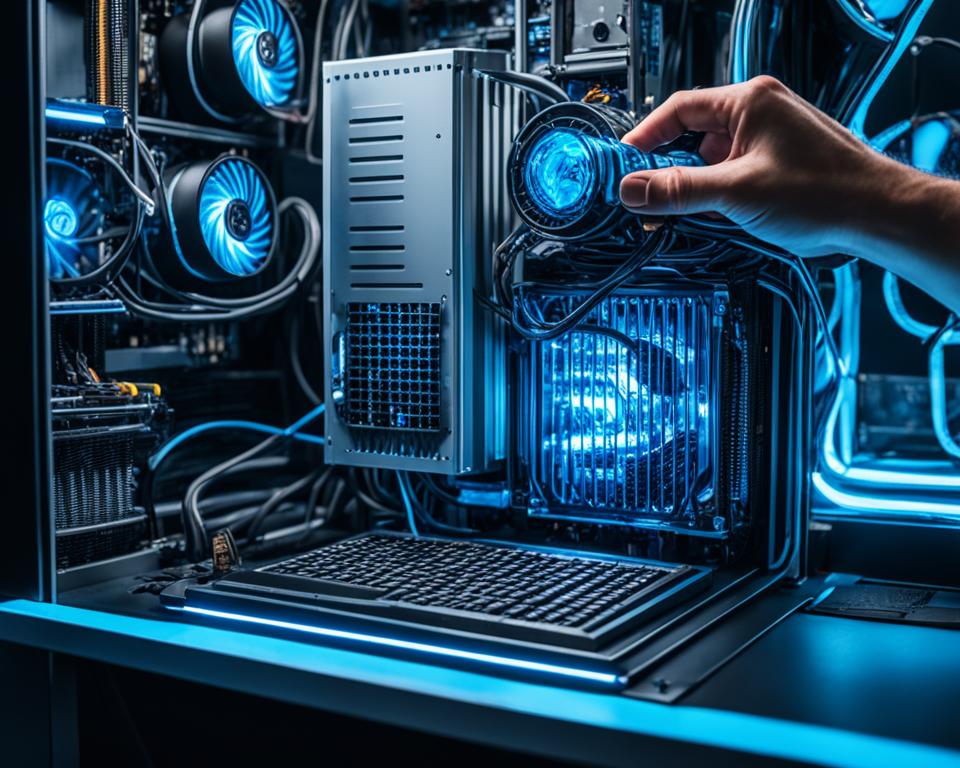
Properly cleaning your PC fans is essential for maintaining optimal performance and preventing dust buildup. Follow these step-by-step instructions to ensure your fans are free from dust and debris.
Gather the Necessary Tools
- Screwdriver
- Compressed air can
- Soft brush
- Microfiber cloth
- Isopropyl alcohol
Power Down and Unplug Your Computer
Before beginning the cleaning process, make sure your computer is turned off and disconnected from the power source. This ensures your safety and prevents any damage to the components.
Remove the Side Panel
Using a screwdriver, carefully remove the screws securing the side panel of your computer case. Gently slide off the panel to expose the internal components.
Detach the Fans and Filters
Locate the PC fans inside your computer. Most cases have at least one fan on the front and back. Some cases may also have additional fans on the top or side. Remove the screws or clips holding the fans in place and detach them. Also, remove any filters covering the fans if applicable.
Blow Away Dust with Compressed Air
Using the compressed air can, blow away the loose dust and debris from the fan blades, heat sink, and surrounding areas. Keep the can upright and use short bursts of air to prevent liquid from damaging the components. Use the soft brush to gently loosen and remove stubborn dust.
Wipe Away Remaining Dust
Using a microfiber cloth, wipe away any remaining dust particles from the fan blades, heat sink, and other surfaces. Take care to avoid applying excessive pressure and damaging the delicate components.
Clean the Fan Blades and Filter Frames with Isopropyl Alcohol
Dampen a clean cloth or cotton swab with isopropyl alcohol. Gently wipe the fan blades and filter frames to remove any grime or residue. This helps disinfect and restore the fans to their optimal condition.
Allow the Fans and Filters to Dry
After cleaning, it is crucial to allow the fans and filters to dry completely before reattaching them. This helps prevent moisture-related damage and ensures proper functionality.
By following these steps and regularly cleaning your PC fans, you can maintain optimal performance, prevent overheating, and prolong the lifespan of your computer components.
Maintaining Your PC Fans
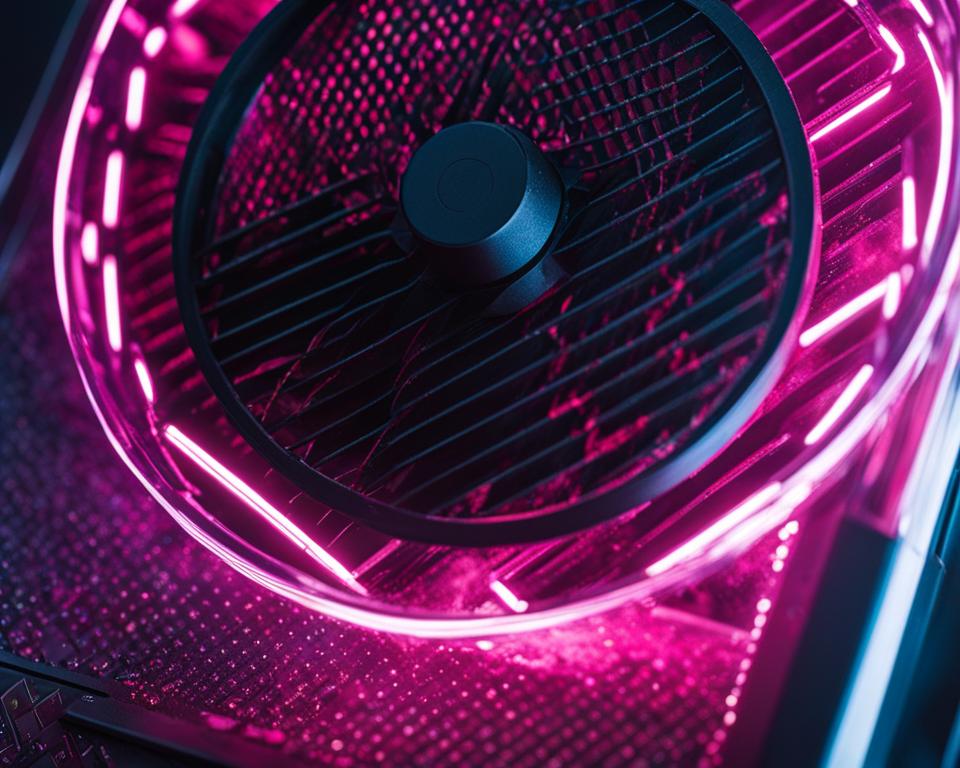
Regular maintenance is essential for keeping your PC fans in top shape and ensuring optimal performance. Here are some important tips and practices to help you maintain your PC fans:
1. Choose a Suitable Location for Your PC
When setting up your computer, it’s crucial to select a suitable location that is away from direct sunlight, heat sources, or moisture. This will help prevent dust buildup and reduce the risk of overheating.
2. Adjust Fan Configuration and Speed
Optimizing fan configuration and speed can significantly impact cooling efficiency. Take advantage of BIOS settings or fan controllers to adjust fan curves, ensuring they spin at appropriate speeds to maintain optimal temperatures.
3. Regularly Check and Replace Worn-out Fans and Filters
Over time, fans and filters can become worn out or damaged, affecting their efficiency. It’s important to regularly inspect these components and replace them with standard or aftermarket options as needed. This will help ensure proper airflow and prevent dust buildup.
4. Practice Proper Cable Management and Ventilation
Good cable management not only enhances the aesthetics of your PC but also improves airflow. Organize and secure cables away from fans to prevent obstruction. Additionally, ensure your PC has adequate ventilation, allowing for proper airflow throughout the system.
Implementing these maintenance tips will not only prolong the lifespan of your PC fans but also contribute to a cooler, quieter, and more efficient computer system.
Regular maintenance is key to ensuring the optimal performance of your PC fans. By choosing the right location, adjusting fan configuration, regularly checking and replacing worn-out components, and practicing proper cable management and ventilation, you can keep your PC running smoothly and prevent dust buildup. Don’t neglect the maintenance aspect, as it plays a vital role in the longevity and overall performance of your computer.
Improving PC Airflow
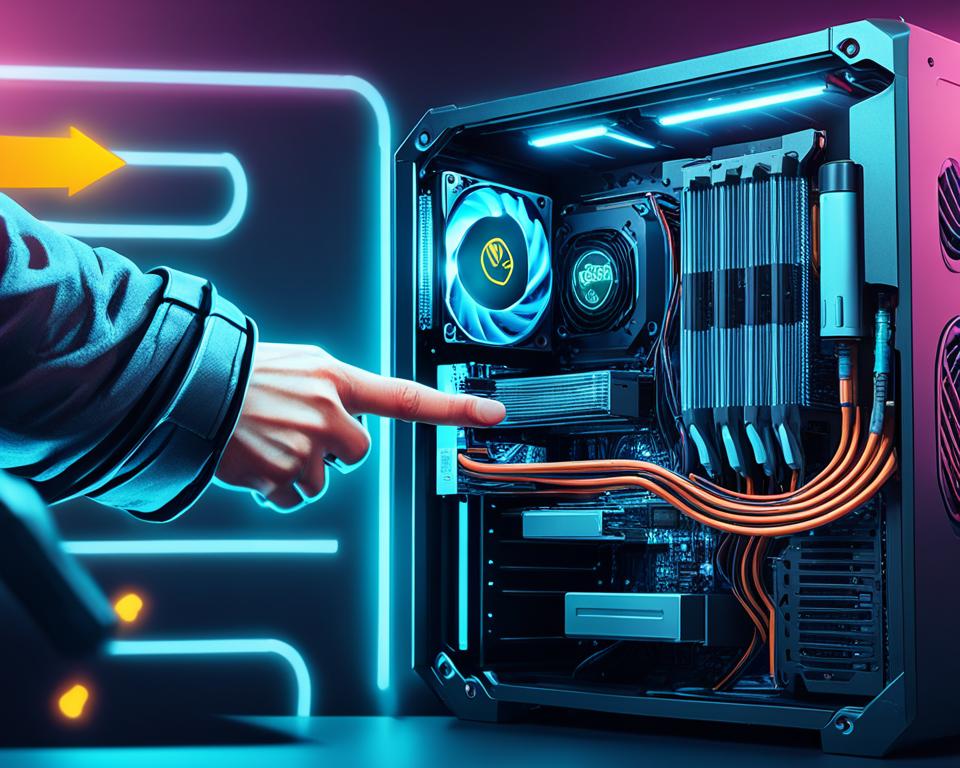
While cleaning and maintaining PC fans are essential for optimal performance, there are additional methods to further enhance airflow and overall cooling system efficiency. By implementing the following strategies, you can improve the airflow within your PC and ensure that your components stay cool even during intense operations.
Upgrading CPU and GPU Coolers
One effective way to increase PC airflow is to upgrade your CPU and GPU coolers. By investing in more efficient options such as liquid coolers or high-end air coolers, you can significantly lower temperatures and reduce fan noise. These advanced cooling solutions provide better heat dissipation capabilities, allowing your components to operate at optimal temperatures.
Installing Additional Case Fans
Another method to improve airflow is by installing additional case fans. Adding more fans or larger fans can increase the overall airflow and create positive air pressure inside the case, promoting better cooling. Placing fans strategically at the front and rear of the case ensures proper air intake and exhaust, effectively dissipating heat from the system.
Optimizing Cable Management
Poor cable management can obstruct airflow and disrupt the natural flow of cool air inside the PC. It’s important to organize and route cables properly to minimize obstruction and maximize airflow. Using cable ties, Velcro straps, or even cable management accessories can help optimize cable management and improve airflow within the case.
Using M.2 SSDs and Low-profile RAMs
Utilizing space-saving components like M.2 SSDs and low-profile RAM modules can also contribute to better airflow. M.2 SSDs, which are installed directly into the motherboard, eliminate the need for bulkier storage devices and allow for better air circulation. Similarly, low-profile RAM modules reduce the overall height of memory modules, creating more space for air to flow through the system.
To summarize, improving PC airflow involves upgrading CPU and GPU coolers, installing additional case fans, optimizing cable management, and utilizing space-saving components. By implementing these strategies, you can effectively enhance the cooling system performance and maintain optimal temperatures for your PC components, ensuring a reliable and efficient computing experience.
| Methods to Improve PC Airflow | Benefits |
|---|---|
| Upgrading CPU and GPU Coolers | – Lower temperatures – Reduce fan noise – Enhanced cooling performance |
| Installing Additional Case Fans | – Increased overall airflow – Positive air pressure – Efficient heat dissipation |
| Optimizing Cable Management | – Unobstructed airflow – Better cooling efficiency – Improved aesthetics |
| Using M.2 SSDs and Low-profile RAMs | – Improved space utilization – Better air circulation – Enhanced system airflow |
Preparation and Safety Measures
Before you begin cleaning your PC fans, it is important to take some necessary precautions and gather the essential tools. Following these safety measures will help protect your computer components and ensure a smooth cleaning process. Prepare the necessary tools:
- A soft brush to gently remove dust and debris
- A can of compressed air to blow away stubborn dust particles
- A microfiber cloth for wiping surfaces
- Isopropyl alcohol to disinfect and clean fan blades
- A small screwdriver in case you need to remove fans or filters
Now that you have your tools ready, it’s time to take some additional precautions to avoid damaging your computer. Follow these safety measures:
- Turn off your computer and unplug it from the power source. This will prevent any electrical accidents and ensure your safety throughout the cleaning process.
- Allow your computer to cool down completely before starting the cleaning process. This will prevent accidental burns and potential damage to delicate components.
- Wear an anti-static wrist strap or ground yourself by touching a metal surface before touching any internal parts of your computer. This will help prevent static discharge, which can harm sensitive components.
By preparing for PC fan cleaning and following these safety measures, you can confidently proceed with the cleaning process and ensure the longevity of your computer’s performance.
Example Image:
Step-by-Step Guide for Cleaning PC Fans
Cleaning your PC fans is an essential maintenance task that can optimize your computer’s performance and prevent overheating. To help you clean your PC fans like a pro, we have prepared a step-by-step guide using compressed air, a common and effective cleaning tool.
Gently Open the Computer Case
Start by turning off your computer and unplugging it from the power source. Then, gently open the computer case using a screwdriver. Take caution not to damage any internal components and ensure proper grounding to prevent static discharge.
Locate and Clean the Fan Blades
Once the case is open, locate the PC fan(s) inside. Using a cotton swab dampened with isopropyl alcohol, gently clean the fan blades to remove any dust or debris. Ensure thorough cleaning of each blade to maintain optimal airflow.
Blow Out Loose Dust with Compressed Air
After cleaning the blades, use a can of compressed air to blow out any loose dust particles that may have accumulated on the fan and inside the computer case. Maintain a safe distance and angle to prevent damage to the components.
Clean the Fan Mechanism
For a more thorough cleaning, use a clean cotton swab dipped in isopropyl alcohol to clean the fan mechanism. Be careful not to let the fan spin freely as it may damage the internal bearings or electrical connections. Hold the fan in place while cleaning.
General Cleaning of the Entire Computer
While you have the case open, take the opportunity to use compressed air to clean other components, such as the motherboard, GPU, and hard drives. This will help remove any dust that may affect the overall performance and temperature of your computer.
| Tools Needed | Precautions |
|---|---|
| Cotton swabs | Ensure the computer is turned off and unplugged |
| Isopropyl alcohol | Avoid letting the fans spin freely |
| Compressed air can | Maintain a safe distance while using compressed air |
| Screwdriver | Prevent damage to internal components |
Remember to let the fans and components dry completely before reassembling the case. Cleaning your PC fans regularly, following this step-by-step guide, can help keep your computer running smoothly and extend its lifespan.
Maintenance Tips and Troubleshooting
To keep your PC fans running smoothly and troubleshoot any issues, follow these maintenance tips:
1. Ensure proper ventilation: Place your computer in a clean, dry, and well-ventilated area, away from direct sunlight, heat sources, and pets. This will prevent excessive heat buildup and dust accumulation.
2. Check for obstructions: Regularly inspect the airflow path to ensure there are no obstructions or tangles that could impede the fan’s performance. Clear any dust or debris that may have accumulated on or around the fans.
3. Cable management: Organize the cables inside your computer case to maintain proper airflow. Reroute cables away from the fans and make sure they are not blocking the fan blades or obstructing the airflow.
4. Update drivers and BIOS: Regularly update your computer’s drivers and BIOS to ensure optimal performance and compatibility with the fans. Check the manufacturer’s website for the latest updates.
5. Adjust fan settings: Use the BIOS or fan control software to adjust the fan settings according to your needs. Optimize the fan speed and configuration to strike a balance between cooling and noise levels.
If you encounter any issues with your PC fans, follow these troubleshooting steps:
1. Check fan spin: Ensure the fans are spinning freely when the computer is powered on. A fan that doesn’t spin or spins erratically may indicate a faulty motor or a connection problem.
2. Verify fan connections: Make sure all fan cables are securely connected to the motherboard or fan controller. Loose or faulty connections can cause the fans to malfunction.
3. Inspect heat sink mounting: Ensure the heat sink is properly secured to the CPU or GPU. Loose or improper mounting can result in insufficient cooling and higher temperatures.
4. Consider component compatibility: Check if your fans and cooling solutions are compatible with your computer’s components. Incompatible fans may not provide adequate cooling for high-performance processors or graphics cards.
5. Evaluate software issues: Some fan-related problems can be caused by software issues, such as incorrect fan profiles or conflicts with other software. Update your operating system and fan control software, and ensure they are configured correctly.
If your troubleshooting efforts are unsuccessful or you are unsure about handling PC fan issues, it is recommended to seek professional assistance to avoid further damage or voiding warranties.

